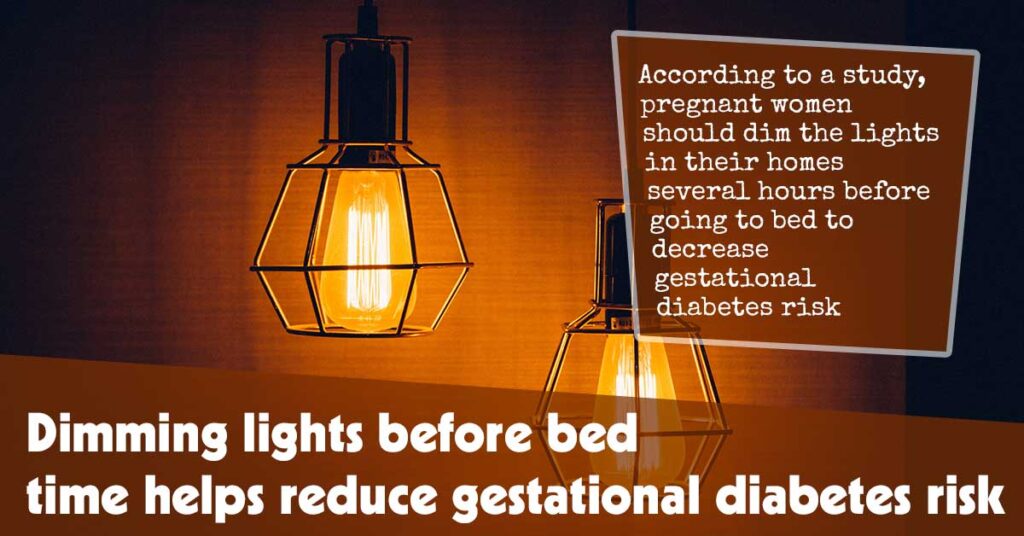According to research, pregnant women can reduce gestational diabetes risk by dimming the lights at home and switching off or dimming down electronic device screens several hours prior to bedtime.
Women participating in the study who developed gestational diabetes experienced higher exposure to light for three hours before sleeping; their daily or sleeping exposure or activity levels, however, didn’t differ compared to individuals who didn’t develop gestational diabetes.
Results show that exposure to light before sleeping could be an underestimated and easily modifiable gestational diabetes risk factor.
Evidence indicates that light exposure just before bedtime could be associated with impaired regulation of glucose in non-pregnant individuals, while its impact during gestation on gestational diabetes risk remains poorly understood. Gestational diabetes risk has serious repercussions for both mother and infant.
Gestational diabetes rates are increasing worldwide. An estimated 4.5% of first-time pregnant women who gave birth between 2011 and 2013 experienced gestational diabetes, rising an average of 3.4% every three years until 2019. By 2019, gestational diabetes accounted for 7.8% of births recorded.
Gestational diabetes increases the risk of obstetric complications and increases dementia, heart disease and diabetes for its mother, while increasing her chances of dementia, heart disease and diabetes for herself as she ages. For her infant this increased risk may translate to higher blood pressure or obesity over time.
Data show gestational diabetes carries almost 10 times higher risks of type 2 diabetes compared to individuals without glucose issues during gestation.
Bright lights found both inside the home as well as electronic devices like smartphones, computers and TVs may expose someone to bright light before bedtime.
No one considers the potential harm posed by an environment filled with light from when we wake up until bedtime, yet most don’t notice the need for dimmed lighting for at least some hours prior to going to sleep; such an abundance of illumination is likely not required at any point during the evening hours.
Reduce any unnecessary lighting in the environment for three hours prior to bedtime, including any phones or computers used, such as using night light options and turning off blue light filters. If necessary, try to limit their usage so the screens remain as dim as possible while using night light options to maximize restful restful sleep.
Gestational Diabetes increases one’s risk for gestational diabetes during future pregnancies. Pre-sleep exposure to light increases heart rate and may contribute to elevated blood pressure, insulin resistance and abdominal obesity.
Pre-sleep exposure to light could alter glucose metabolism through sympathetic overactivity, leading to increased heart rate before bed when it should decrease and activating fight or flight responses inappropriately at a time when rest is required.
Studies suggest that sympathetic overactivity could contribute to cardiometabolic disease, an umbrella term covering conditions such as an imbalance of lipids, elevated blood pressure, insulin resistance and abdominal obesity – which all increase cardiovascular risk.
Research with 741 second trimester pregnant women between 2011 and 2013 measured their exposure to light using a wrist-worn actigraph, using this measurement throughout their second trimester (i.e. the period when gestational diabetes screening took place).
Pre-sleep exposure to light remains strongly associated with gestational diabetes despite accounting for daytime exposure, sleep regularity index, midpoint sleep duration duration season employment schedule commercial insurance education race ethnicity BMI and age factors.
Gestational Diabetes rates have seen an increase, likely related to rising BMI and older gestating mothers.




